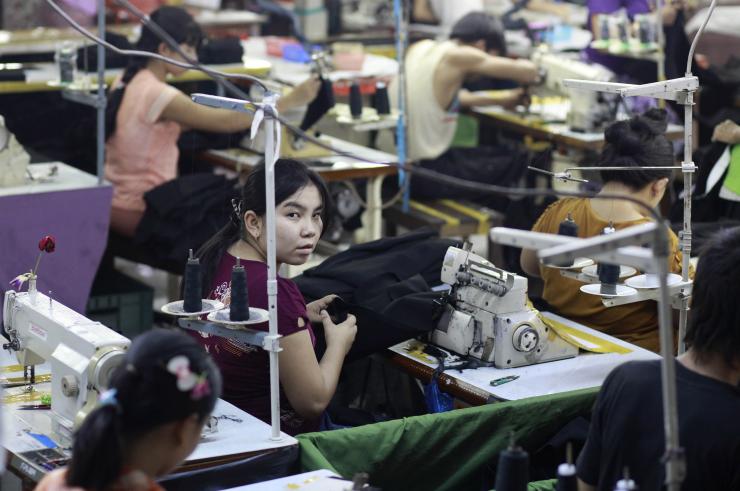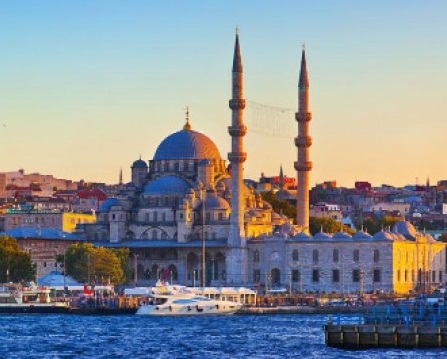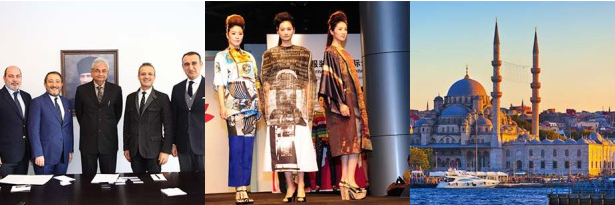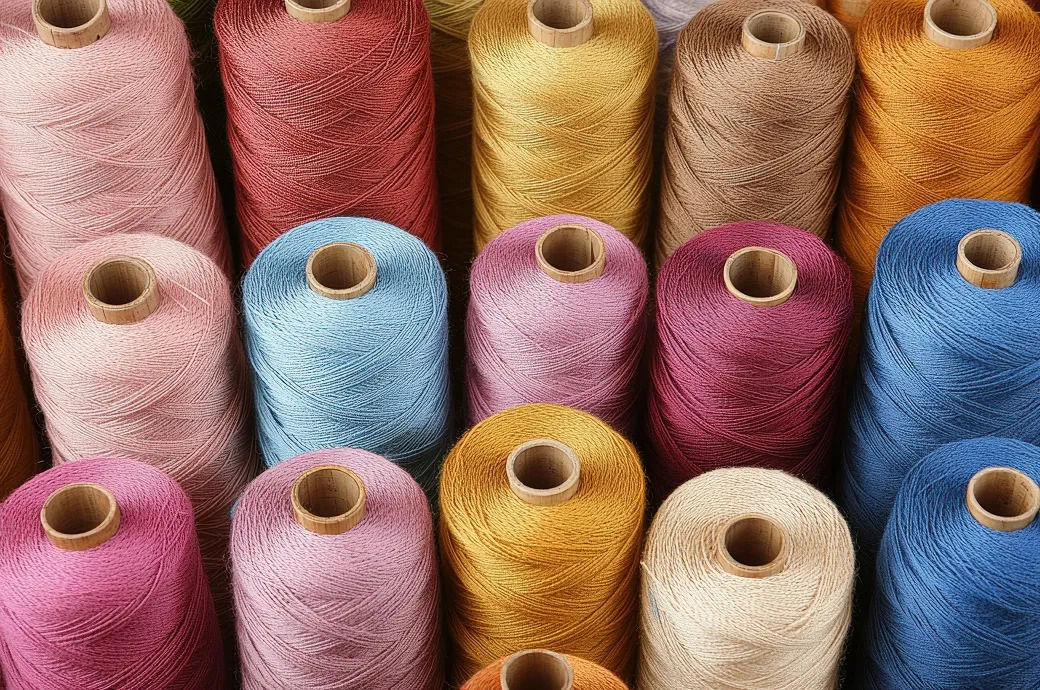FW
India will be among the 18 countries which to tour the United States from September 27 to October 3 to get a close look at how cotton is produced, processed and marketed. Represented countries consume about 96.5 million cotton bales per year in their textile mills, which represent about 84 per cent of the world’s consumption. The countries import about 29.4 million bales annually or about 85 per cent of the world’s total cotton imports. Companies from these 18 countries are expected to consume about 3.1 million bales in 2015 while US cotton exports to those companies are estimated at about a million bales.
Tour participants will visit cotton farms and cotton research centers. They will meet exporters in the four major cotton belts. More than 800 textile executives from more than 60 countries have participated in these orientation tours, which began in 1968. Major tour objectives are to help customers of US cotton increase awareness about the types and qualities of US cotton, help them gain better understanding of US marketing practices and enhance their relationships with US exporters. The aim of this year’s tour is to help foreign textile manufacturers develop a deeper appreciation for US cotton fiber quality and the industry’s timely delivery system.
Bangladesh wants a fair price for its readymade garment products from the US. Bangladesh garment exporters say western buyers are resorting to arm-twisting to lower prices. The nominal value of its readymade garment products have dropped by 2.9 per cent since last year.
Another issue on which Bangladesh wants action on is restoration of GSP facility. The US suspended Bangladesh from GSP in June 2013 based on Bangladesh’s failure to meet statutory eligibility requirements related to worker rights. The decision to suspend trade benefits under the GSP program resulted in US imports of GSP-eligible products from Bangladesh becoming ineligible for duty-free treatment.
Since then the US says Bangladesh has made progress in addressing fire and building safety issues in the garment sector but that further progress is needed for the country to get back GSP.
In fiscal 2013-14, Bangladesh exported goods worth more than $5.58 billion to the US, with 95 per cent of them being garment products, which were subject to 15.61 per cent duty.
India's exports during August 2015 were valued at $21266.31 million, 20.66 per cent lower in dollar terms than the level of $26,803.48 million during August 2014, the Commerce and Industry Ministry said in a statement. Cumulative value of exports for the period April-August 2015/16 was $1,11,094.47 million as against $1,32,529.64 million registering a negative growth of 16.17 per cent in dollar terms over the same period last year.
Imports during August 2015 were valued at $33,744.28 million which was 9.95 per cent lower in dollar terms over the level of imports valued at $37,472.78 million in August 2014. Cumulative value of imports for the period April-August 2015/16 was $1,68,610.56 million as against $1,90,747.68 million registering a negative growth of 11.61 per cent in dollar terms over the same period last year, the statement added.
The trade deficit for April-August 2015/16 was estimated at $57,516.09 million which was lower than the deficit of $58,218.04 million during April-August 2014/15. A statement by Tirupur Exporters Association (TEA) says, all India readymade garments exports, including Tirupur knitwear exports declined by 7.3 per cent in August compared to the corresponding month of last year 2014/15.
TEA President A Sakthivel opines there is an urgent need to implement pending measures like three per cent interest subvention on packing credit, reduction of bank interest rates, refund of duty drawback rate without delay, improvement in the infrastructure of road and port, 24x7 operation in ports for all shipping bills, refund of TUFs interest subsidy to arrest the downfall and restore the growth of exports.
www.tea-india.org
World ending cotton stocks are projected higher than last month. Production is reduced for Brazil and Pakistan, partially offset by an increase for the United States. The forecast is that consumption will reduce for several countries, including Brazil, India, Indonesia, Pakistan, Thailand, and Turkey, as economic uncertainties and rising yarn stocks point to lower-than-expected demand. World trade reduced slightly as a result of lower consumption. World ending stocks are projected at 106.3 million bales.
The 2015-16 US cotton supply and demand forecasts include higher production, exports, and ending stocks compared with last month. Production is raised to 13.4 million bales, as an increase of 4,58,000 bales for Texas is partially offset by revisions for other states. Domestic mill use is unchanged. Exports are raised to 10.2 million bales based on the larger available supply. Ending stocks are now projected at 3.2 million bales or 23 per cent of disappearance. The marketing year average price received by producers is projected to range from 56 to 68 cents per pound, a reduction of three cents at the midpoint from last month based on larger US supplies and lower world consumption.
Estimated US 2014-15 ending stocks are unchanged from last month at 3.7 million bales.
Greaves Cotton has launched a range of farm equipment like paddy weeders and power tillers. The products are equipped with features meticulously designed after a detailed understanding of Indian farming requirements. They are powerful, fuel efficient and easy to maintain. These farmer friendly products are value for money and suitable for local soil conditions. They are also designed to be light weight and can be comfortably operated by women.
Greaves Cotton wants to become a leading player in the farm equipment sector. It plans to unveil technologically superior and value added products in future. Greaves Cotton is a manufacturer of a wide variety of farm equipments in India. It makes automotive engines, diesel engines and generators. The manufacturing plant is in Chennai.
The company’s farm equipment is focused on transforming the lives of small and marginal farmers by enabling them to mechanise various farming practices. Greaves Cotton, established in 1859, is one of India’s leading and well-diversified engineering companies. It manufactures a wide range of industrial products to meet the requirements of core sectors in India and abroad. The company's core competencies are in diesel, petrol engines, gensets, pump sets and construction equipment.
www.greavescotton.com/
Cotton ginners in Haryana have sought a reduction in market fee and a full tax refund, arguing they will not be able to get raw cotton for ginning. Ginners say the state government has not reduced market fee on cotton this season. The four per cent levy will render them uncompetitive and hit business. They want rationalisation of VAT on cotton by ensuring refund of full tax on inter-state sale of cotton.
The Haryana government has issued a notification whereby ginners will not be able to claim about two per cent tax out of the 4.20 per cent value added tax paid on cotton while selling it to other states. Ginners say this will prove disadvantageous for them. They claim that out of the cotton output of 20 lakh bales, only three to four lakh bales are consumed within Haryana while the rest are sold to other states.
Haryana’s new industrial policy has a provision giving 100 per cent exemption from market fee to a new ginning unit. Existing ginning units say this is unfair. Ginners have also demanded they should not be charged fixed rates for power consumption for the whole year. They say the cotton ginning sector is operational for only six to seven months in a year.

Myanmar has positioned itself as a direct competitor to Bangladesh in the RMG industry by setting its minimum wage at $67 per month. The Southeast Asian country though, will have to hike wages at regular intervals, promote collective bargaining, and safeguard workers’ health and rights of workers to avoid falling into the same trap as the Bangladeshi garment industry.
Minimum wage review a positive move

The K3600 per day minimum wage came into effect on September 1, after a lot of debating between employers’ and workers’ associations mediated by the National Minimum Wage Committee for more than two years, since the Minimum Wage Law was passed. A person working at the lowest of the seven grades of workers in a ready-made garment factory makes the same amount in Bangladesh. Myanmar will aim to capture some of Bangladesh’s garment export market, with a high concentration of workers in the low-skills category.
The recent announcement though, did not include any reference to pay grades that give even Bangladeshi workers a promise of some upward mobility, although limited. Moreover, after the November 8 elections, whichever government comes to power needs to implement social protections such as health insurance and pensions that give workers in low-end manufacturing jobs a safety net. Factory owners are already stepping up production targets, with a mandated minimum wage. Thus, additional benefits will have to be given by Myanmar to the young to make them stay motivated on local factory floors as opposed to migrating abroad.
Besides, Myanmar will be seen in a favourable light by global brands interested in responsible sourcing if the government takes some responsibility for their workers’ welfare.
Impact on Myanmar’s economy
The government can raise living standards of workers with the implementation of minimum wage. Inflation rates in Myanmar over the years have been lower than Bangladesh, though. Also, people have a higher purchasing powers because of $67 monthly minimum wage compared to Bangladesh. Myanmar can slowly increase productivity, while maintaining the new wage floor and raising it over time to increase private consumption and drive growth.
Apart from this, the country should work with buyers to help find supply chain innovations that would help higher wages over time without sacrificing competitive advantage. As President U Thein Sein’s economic adviser U Zaw Oo mentioned at a panel discussion, for the country, better productivity is already a priority. Thus, for workers, suppliers and buyers, it is a win-win situation if better wages bring up productivity levels.
By taking a share of the Asian manufacturing pie, Myanmar has the opportunity to develop its human resources, as a country transitioning toward democracy. Migrants may enter the nation, to return to their country of origin. Many of them are currently toiling in poor working conditions in Thailand, Malaysia and Singapore. This seems to be an opportunity that Bangladesh missed, which Myanmar should grab to improve its economy and workers’ lives.
Over 300 overseas buyers from 56 countries are expected to visit the international textile and apparel fair, 'Vatra', to be held from September 28 to 30, 2015 in Jaipur. The fourth edition of the exhibition will be held at Jaipur Exhibition & Convention Centre (JECC). Over 50 Indian buying houses from Delhi, Maharashtra, Jharkhand, West Bengal, Tamil Nadu, Karnataka, Uttar Pradesh and Rajasthan are expected to be a part of the fair. A unique feature of this fair is B2B pre-fixed buyer seller meetings.
The fair is being organised by Rajasthan State Industrial Development and Investment Corporation (RIICO) in collaboration with FICCI and Union Ministry of Textiles. Veenu Gupta, Managing Director of RIICO explains, the fair provides an apt platform for display of latest offerings in textiles, assists participants and exhibitors to form new business relations, exports, partnerships worldwide and locations for setting up businesses in India, among others.
Overseas buyers are mainly expected to visit from countries like Algeria, Australia, Hong Kong, Italy , Japan and the UK. Business worth $85 million was generated during 'Vastra-2014' held in Jaipur last year.
www.vastratex.com

Focus on future of industry

The first day of conference on October 14 has top speakers line up viz. Christoph Auhagen, CBO of Hugo Boss, Gordon Richardson, Creative Director of Topman, Jan Hilger, COO of Ahlers (Pierre Cardin, Baldessarini), Leyla Ertur, Country Manager Production, Europe Region, H&M and Murat Akkun, CSR Country Manager of Inditex.
On October 15, there will be a matchmaking program connecting delegates to the Turkish garment industry and specialised workshops. During the IAF General Assembly, a unique discussion session will focus on the future of the industry. This session will be led by World Bank’s lead specialist Emiliano Duch, who was also a keynote speaker at last year’s convention held in Medellín, Colombia.
Industry Association Executives and Board Members from major associations of the five continents will be part of the panel discussion. World Bank is collaborating with the IAF on forming a clearer picture of what are the most successful strategies and policies to create a stronger fashion industry globally.
Conference to touch on global trade dynamics
The conference on October 14, has been subdivided into seven sessions, including introduction by the Turkish Minister of trade, the key note speech of Hugo Boss’s Auhagen, sessions about supply chain and sourcing developments, CSR and sustainability, TTIP and trade policy and emerging brands and emerging markets. In the sustainability session, IAF will share excellent examples from the denim industry and the supply chain session will feature results from McKinsey’s by now famous CPO study on expectations of future sourcing trends.
Woven into the conference is the convention’s theme: ‘Making it Better’. For the industry as a whole to really improve, new value must be added and old values must be implemented. The supply chain session is built around the slogan: ‘not moving production, but improving production.’ In the sustainability session, the panelists will debate the question - how the total textile and fashion industrial chain can become a better employer with less negative impact on our environment. The ‘emerging brands and emerging markets’ session will show how local Turkish brands have developed into big retail chains. There would also be a session on new entrepreneurs as well as the role of wearable technology. Iafnet.eu
A world leader in production of colour and additive solutions for polymeric products, Americhem Inc, released its 2016–2017 Color Trends comprising of six colour palettes: Rush Hour, Office Diligence, Casual Friday, Night Life, Welcome Distraction and Sunday Brunch.
An announcement of the colour families was made on September 10, 2015 at Americhem’s annual colour trends course, as part of Americhem U, which is an ongoing educational series for professionals in the synthetic fibres and plastics industries. Developed by a committee of colour trend specialists, the colour families are predicted to be popular in the coming years based on global influences, pop culture, design trends, technology and fashion-forward colour predictions.
The groups of colours, besides the textures, finishes and effects, are translated into seasonal design concepts, moods and lifestyles, each with a unique story to convey the emotions and context of the colours. This is done in conjunction with a fashion design house in Milan, Italy.
The colour families this year revolve around a common theme, a week in our everyday lives. Aubrey Barto, lead colour trends specialist for Americhem, said that these colours would be at the forefront of product design and, therefore, at the leading edge of consumer preferences in the future. The colours are also apt for any industry interested in accenting their products with innovative and modern colours, she added.












